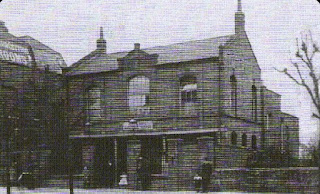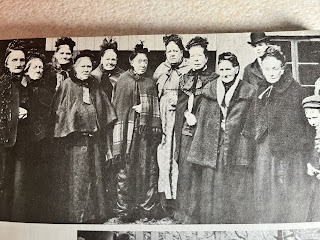Jewish War Hero
September 23, 1940, German bombs smashed into a residential pub in Manor Park, Newham, a few blocks from where Lewis was stationed. Beneath the pub was a bomb shelter with 60 people trapped inside. The building burning, collapsing. A water main burst. The basement shelter was flooding, threatening to drown any survivors.
Lewis and a colleague ran to the site.
The London Gazette reported the story.
“A large HE bomb fell on three shops under which were two public shelters containing over 60 persons. The roof of the shelter collapsed. The bomb also caused a water main to burst which flood them to a depth of approximately two and a half feet before it could be turned off. Those who were not injured were quickly got out, but one man was trapped and in danger of being drowned, while four other men were pinned by the legs.
Lewis waded through the water to the first man and finding that he was wedged in with large pieces of brickwork and timber; (he) jacked up the dangerous roof and by sheer strength forced the brickwork away. he then found that the timber was still holding the man down. He crawled back and obtained a saw with which he cut this away, thus freeing the man just as the water reached his head. Lewis no doubt saved his life.”
Lewis, though at great and continuing risk to his own life, returned numerous times to the burning building as it was collapsing about him to save multiple people. 32 people had been killed. 28 would be saved.
Lewis was commended for the George Medal, the G.M. It is second only to the George Cross, equivalent to the American Congressional Medal of Honor.
To his surprise, for doing what he only felt was his duty, Lewis was presented to the King of England at Buckingham Palace. The King personally pinned the George Medal to him.
Lewis joined the regular army and was posted as an arms instructor attached to the Royal Fusiliers and Middlesex Regiments at the Machine Gun Training Centre. Ever modest, he would not wear his GM ribbon. He was ordered to do so by his Commanding Officer as an example to the younger men he was training.
Mr Lewis passed away in Bournemouth in 1998. His family described him as a kind man and someone who was practical and always willing to help others. They also said that he never spoke about his medal except when he wore it to the AJEX military parade every year.
The Plaque was unveiled on Saturday 9th July 2022 and reads:
At 9 Brooke Road, lived Air Raid Warden
Barnett Lewis
GM (George Medal)
Jewish War Hero
September 23, 1940, at extreme personal risk,
He saved many civilians during the Blitz.
(Hebrew)
Be strong and of good courage (Joshua 1:9)
Jewish American Society
For Historic Preservation and AJEX
The Lewis historical marker project is the tenth in a series of Jewish British historical markers that have been created.
(Address now known as Cottage walk No.9 Brooke road was demolished)
#stokenewington












